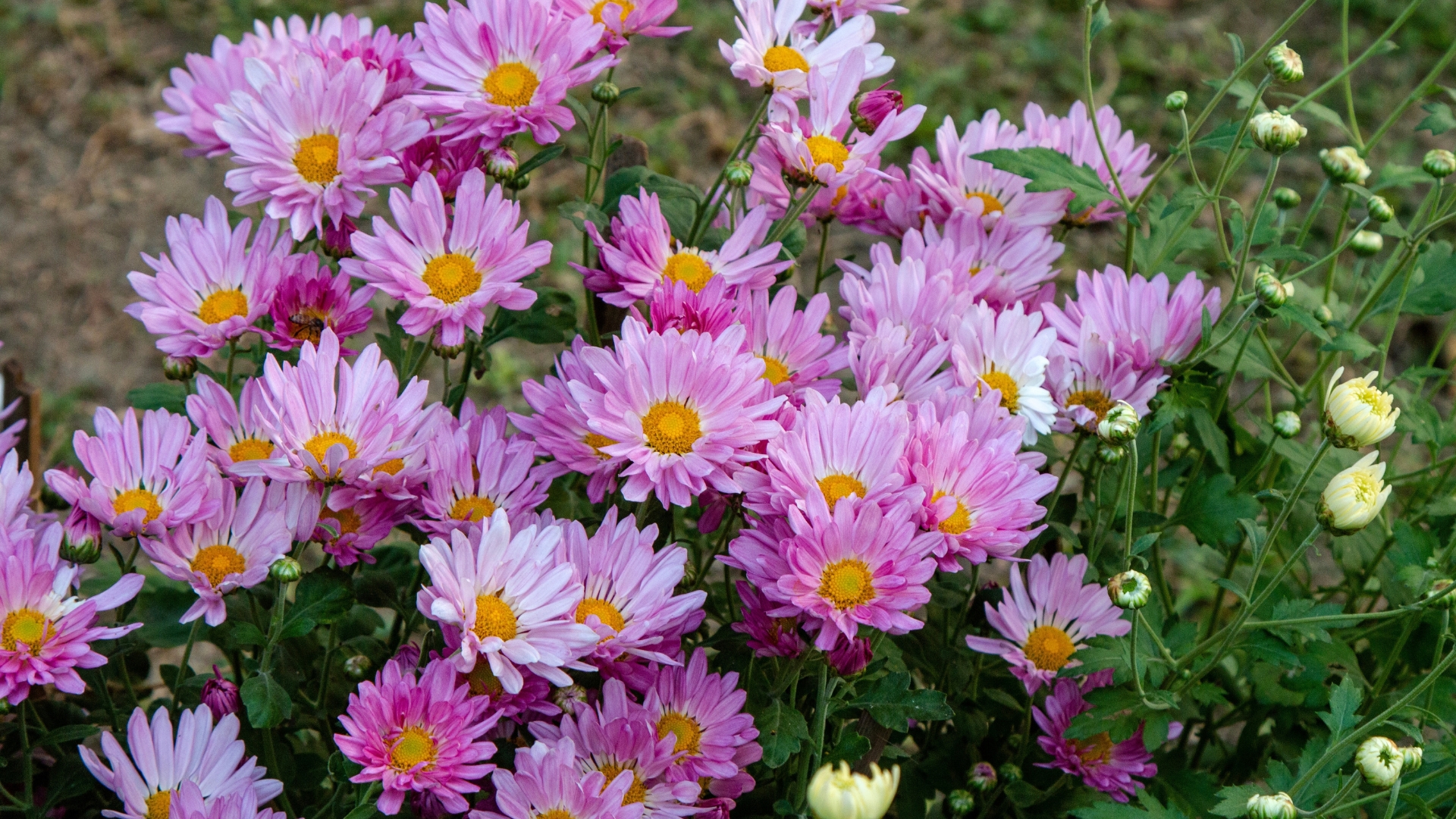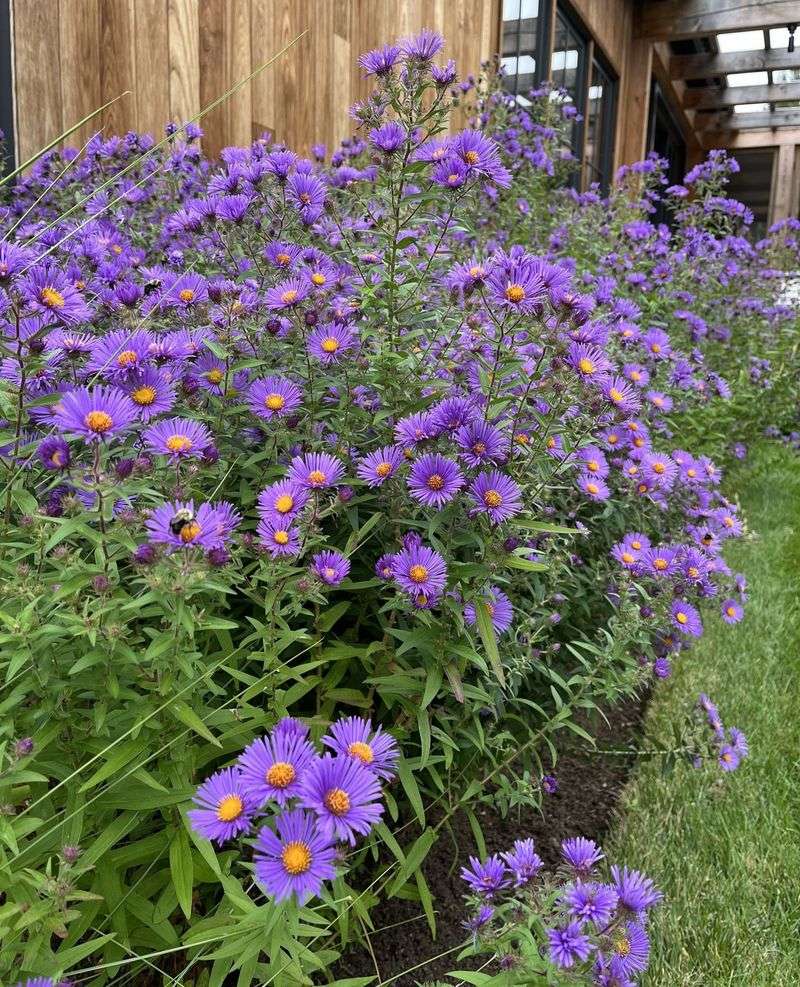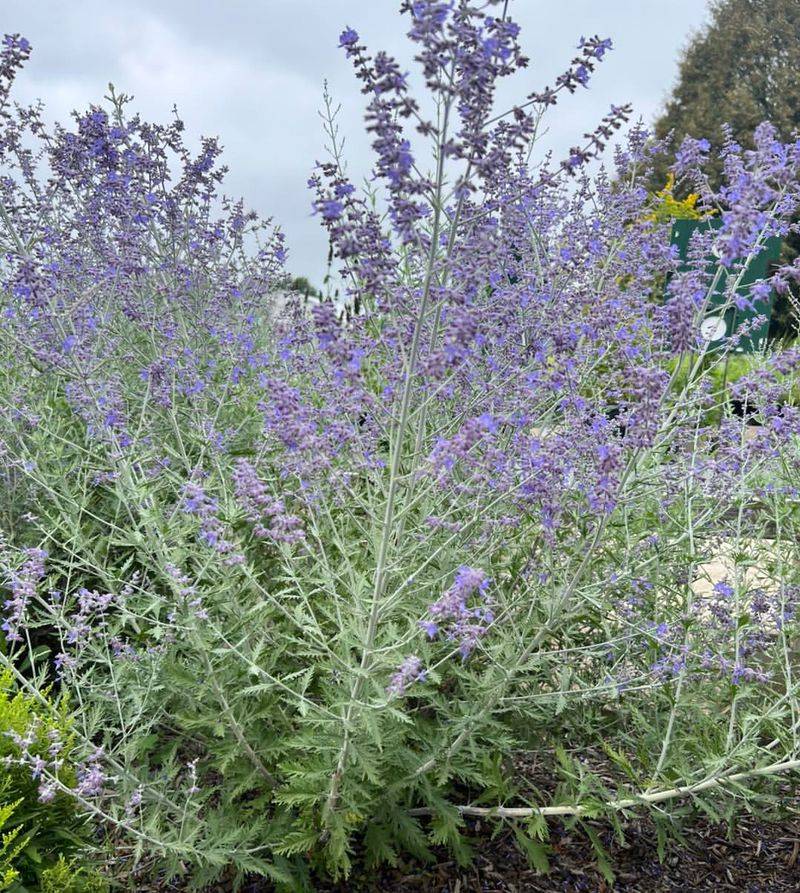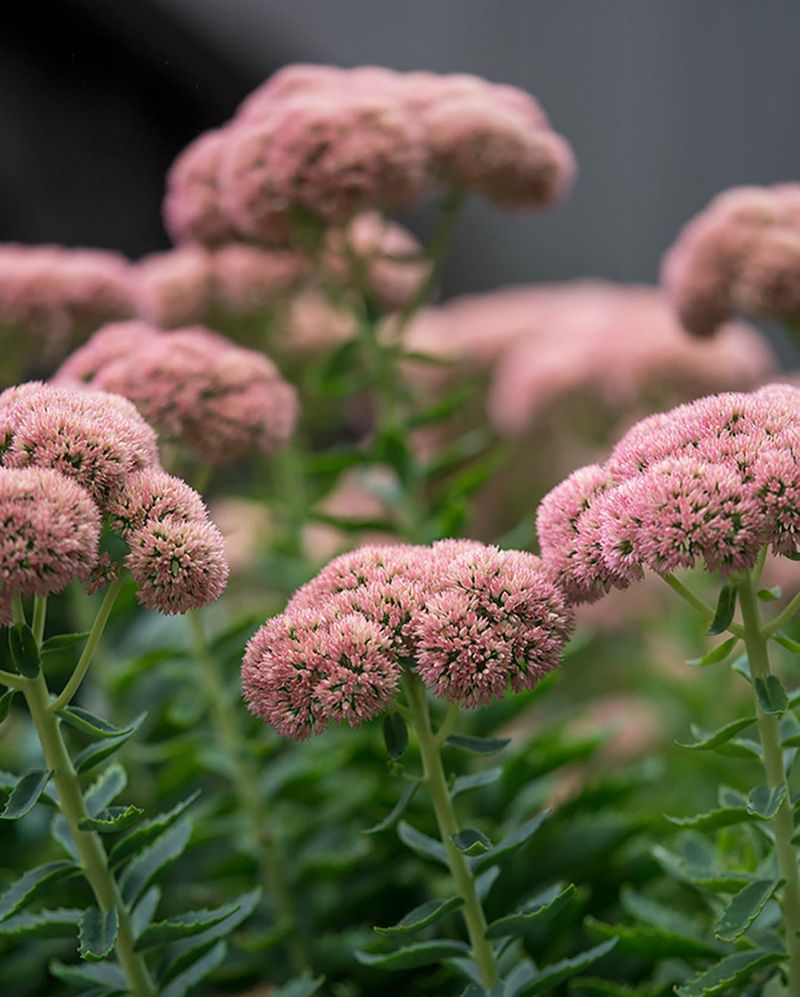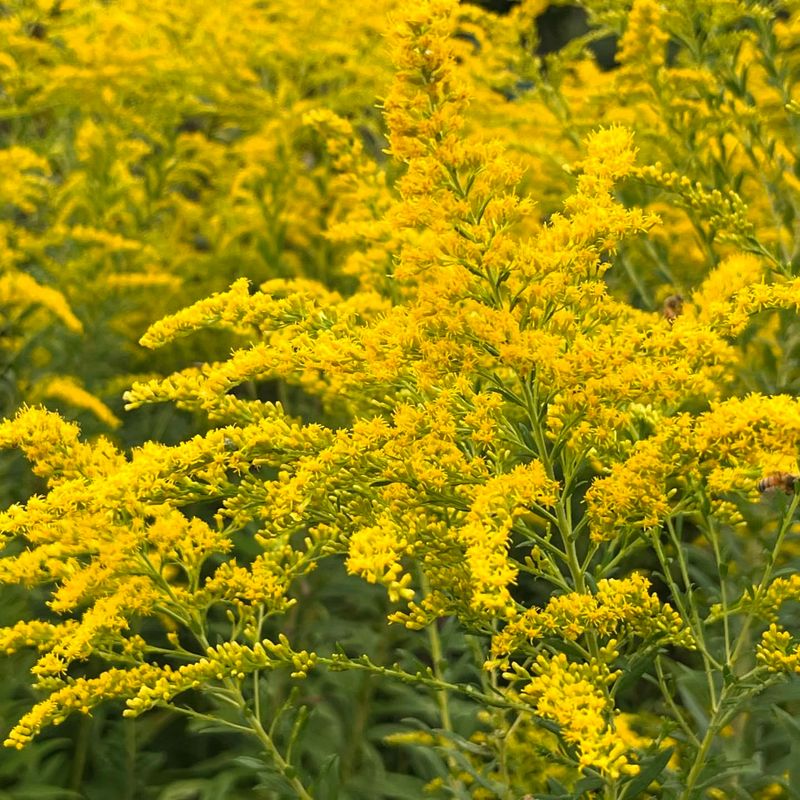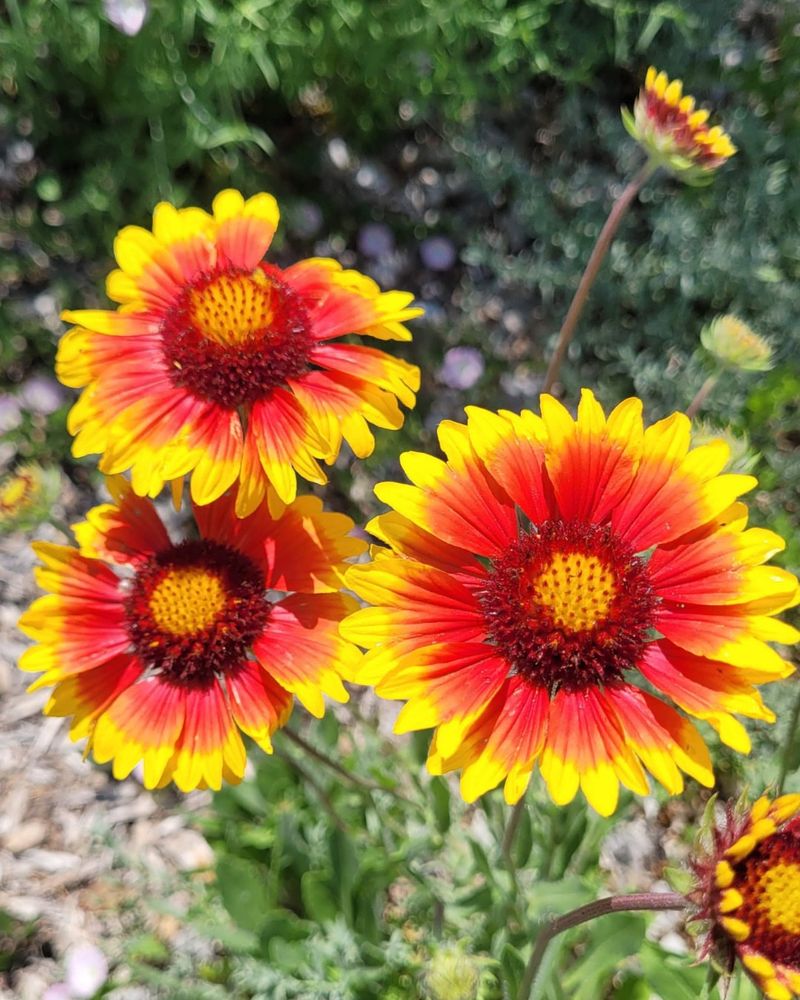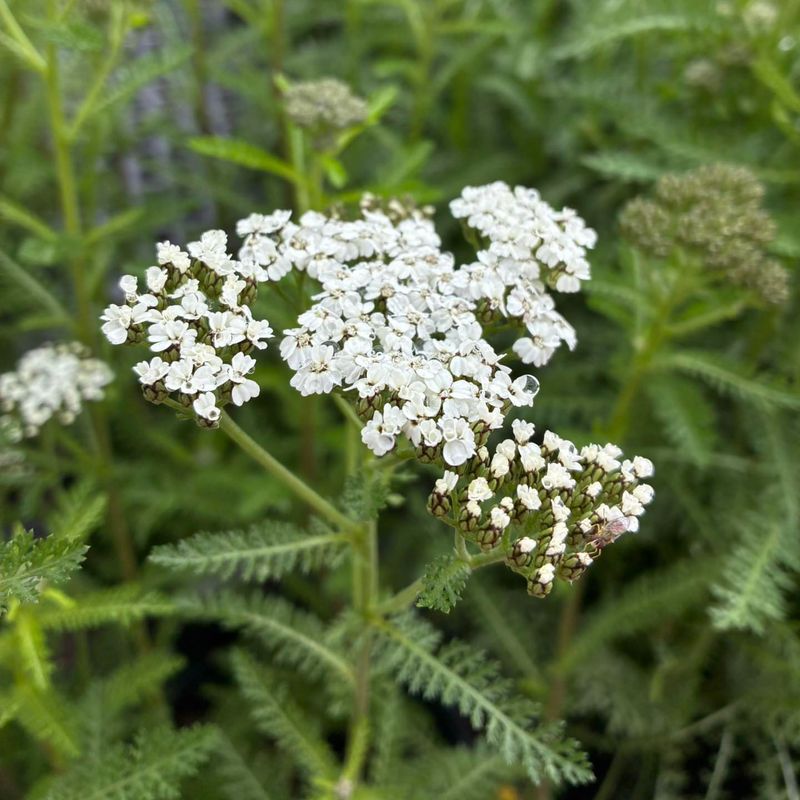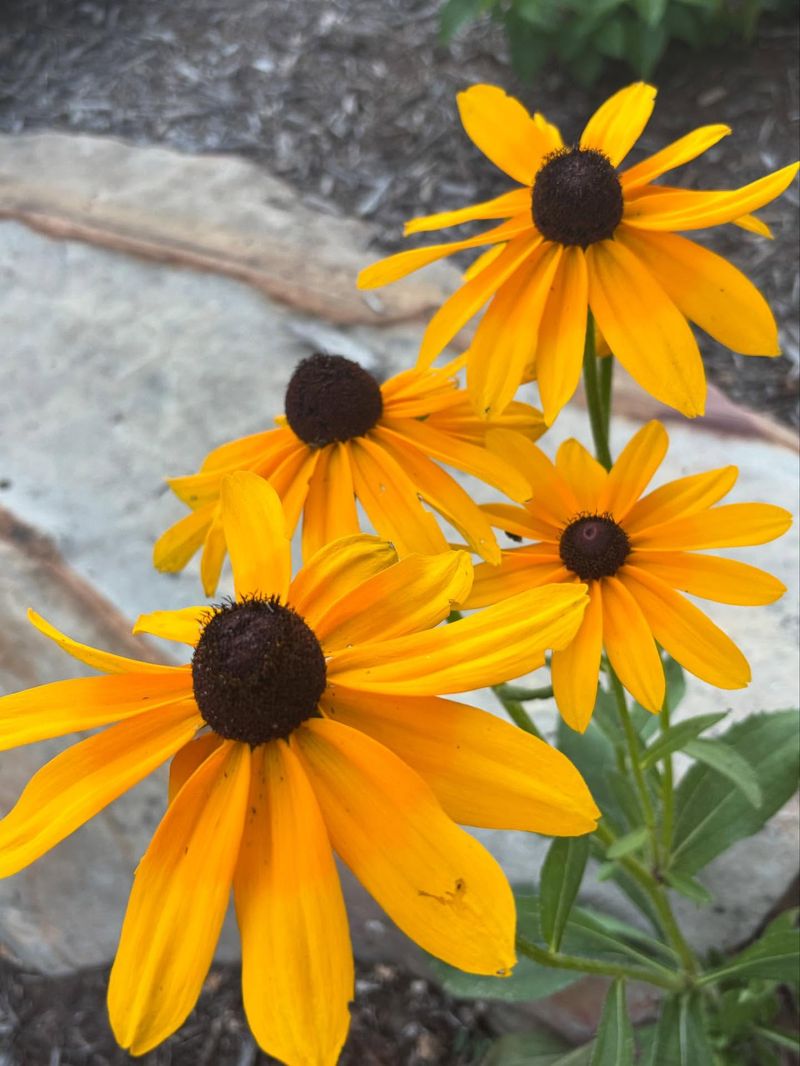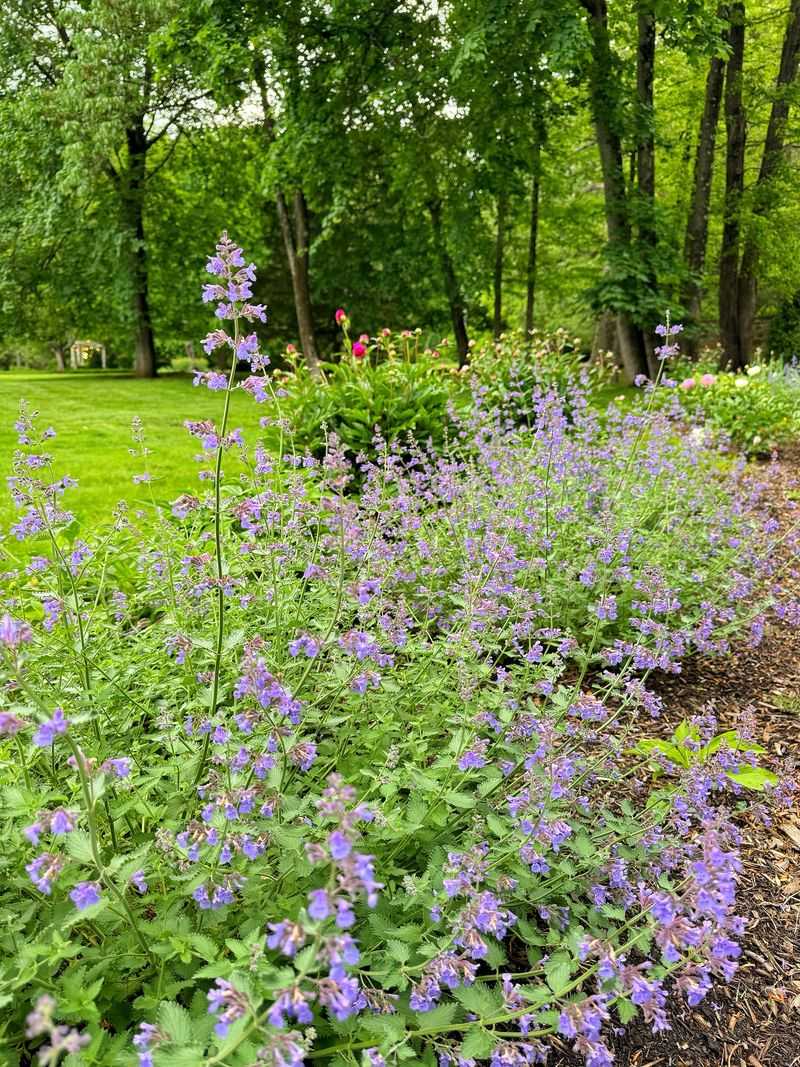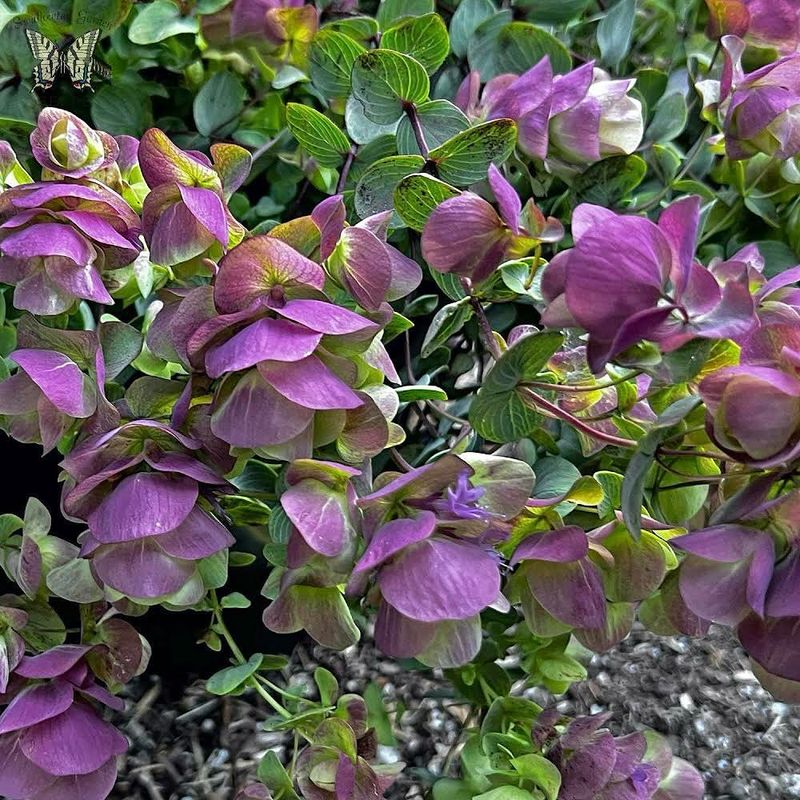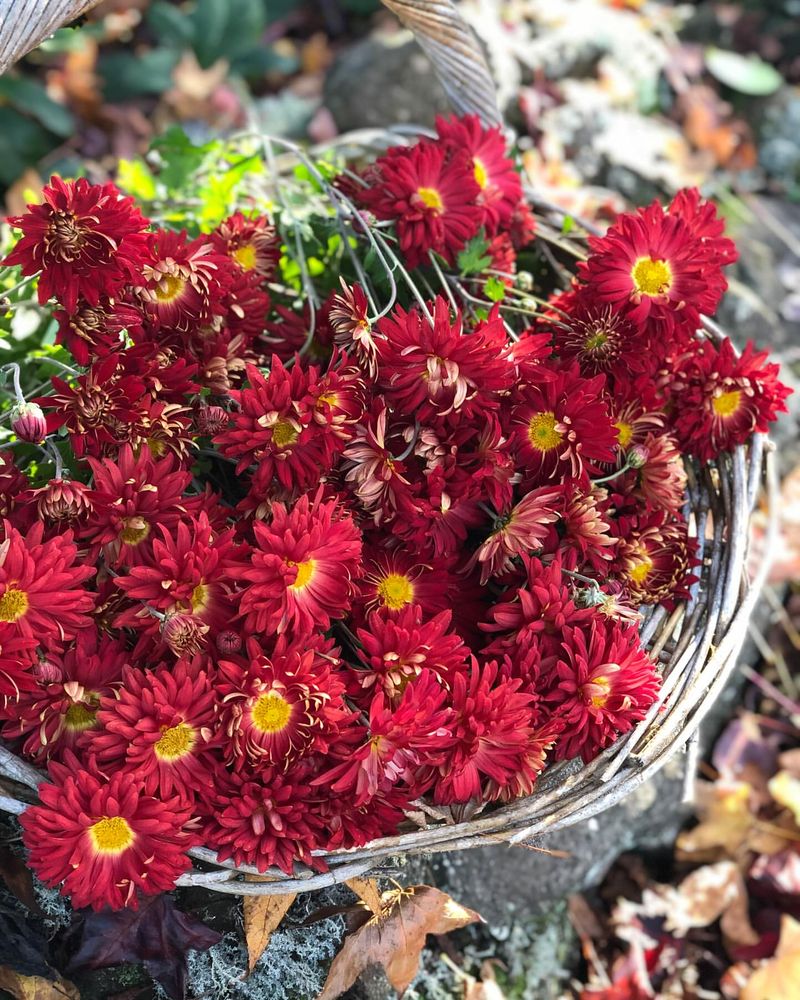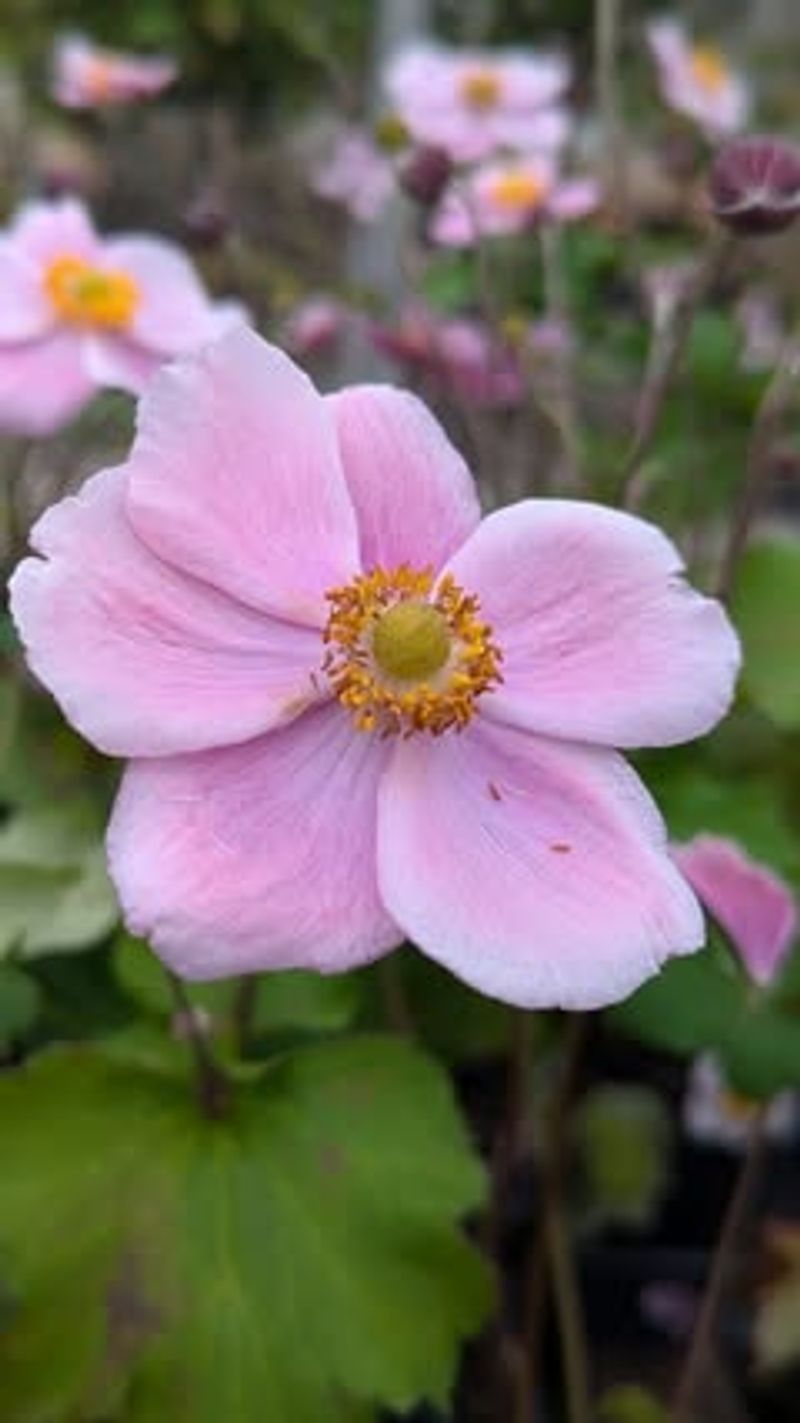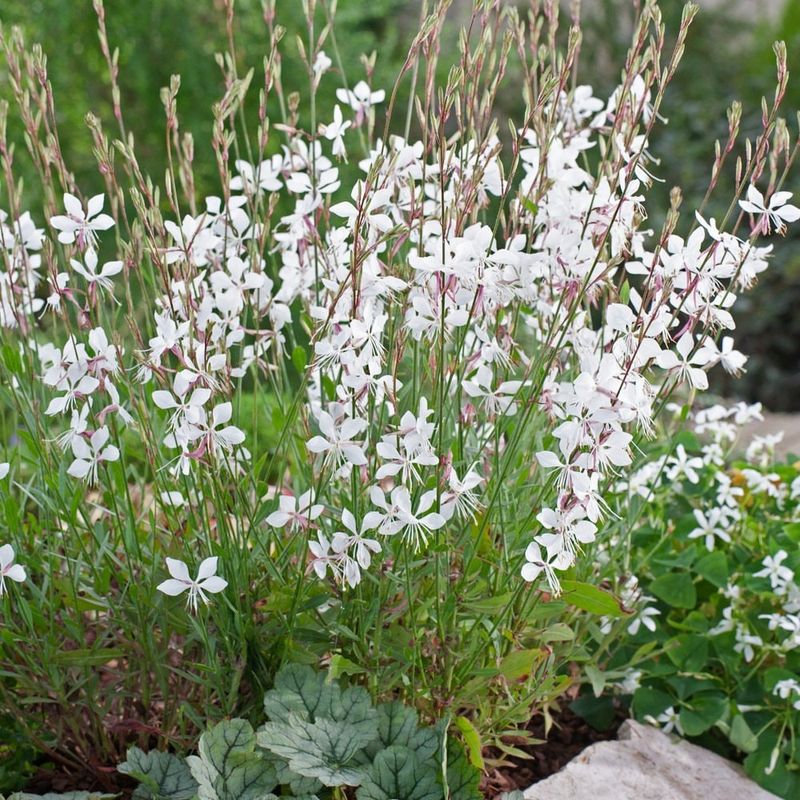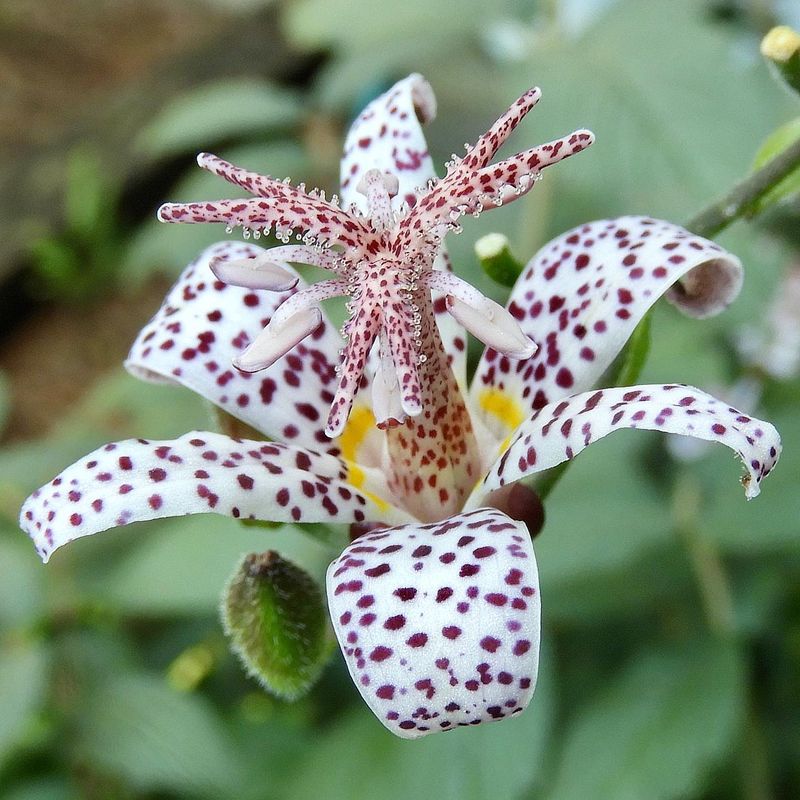Fall color is about to steal the show in Colorado, and these perennials know how to bring it. Just when summer starts to fade, they burst into bloom like they’re showing off.
I spotted a patch the other day and it honestly stopped me in my tracks. If you’re planting this September, these are the ones to count on for that late-season wow.
Trust me, your garden will thank you with every vibrant petal.
1. Asters
Bursting with tiny daisy-like flowers in purple, pink, and blue, these late-season stars thrive in Colorado’s cooling September air. They’re drought-tolerant once established, making them perfect for our unpredictable rainfall patterns.
Pollinators flock to asters when other nectar sources diminish. Plant them alongside ornamental grasses for a stunning contrast that captures Colorado’s wild prairie spirit.
2. Russian Sage
Silvery-gray foliage topped with lavender-blue flower spikes creates a misty cloud effect in any Colorado landscape. The aromatic leaves deter deer and rabbits, while the drought tolerance makes it practically bulletproof.
Many Colorado gardeners appreciate how this perennial stands strong through early frosts. Its wispy appearance softens hardscapes and pairs beautifully with more structured plants like black-eyed Susans.
3. Sedum ‘Autumn Joy’
Watch as the flower heads transform from pale green to pink and finally to rusty red as fall progresses. These succulent perennials love Colorado’s well-drained soils and can handle our intense mountain sunshine without complaint.
Front Range gardeners find that ‘Autumn Joy’ requires almost no maintenance once established. The fleshy leaves store water, helping this plant sail through dry spells that challenge other September bloomers.
4. Goldenrod
Contrary to popular belief, these golden plumes won’t trigger your allergies—that’s ragweed’s fault! Goldenrod brings sunshine yellow to Colorado gardens when days grow shorter and creates a buffet for beneficial insects.
Hardy enough for mountain gardens above 7,000 feet, this native thrives across our state. The arching stems add movement to garden beds, dancing in Colorado’s famous September breezes.
5. Coneflowers
Long after their summer peak, these prairie natives continue producing blooms well into fall. The distinctive seed heads attract goldfinches and other Colorado birds, providing both beauty and wildlife value to your garden.
Even in Denver’s challenging clay soils, coneflowers perform admirably with minimal care. Their daisy-like flowers in purple, white, or yellow stand tall above drought-stressed neighbors when September’s heat lingers.
6. Blanket Flower
Fiery red and yellow blooms mimic Colorado’s autumn aspen displays but in flower form. These cheerful natives keep pumping out blossoms until hard frost, providing reliable color when many plants have finished for the season.
The mountain communities around Boulder particularly appreciate blanket flowers for their resilience. Their ability to handle poor soil, drought, and intense sun makes them winners for Colorado’s challenging garden conditions.
7. Joe-Pye Weed
Towering mauve flower clusters sway gracefully above tall stems, creating vertical interest when many perennials are winding down. Butterflies can’t resist these nectar-rich blooms that thrive in Colorado’s wetter garden spots.
Gardeners along Colorado’s Front Range value this native for its adaptability to both sun and partial shade. The vanilla-scented flowers add a subtle fragrance to September gardens that carries on gentle afternoon breezes.
8. Yarrow
Flat-topped flower clusters in white, yellow, or rusty red continue blooming into fall, especially if summer flowers were deadheaded. The feathery foliage remains attractive even when not in bloom, adding texture to Colorado gardens.
Eastern Plains gardeners appreciate yarrow’s extreme drought tolerance once established. Native varieties have adapted to our state’s challenging conditions over thousands of years, making them nearly indestructible in most Colorado landscapes.
9. Black-Eyed Susan
Golden petals surrounding dark centers keep brightening Colorado gardens well into fall. These short-lived perennials often self-seed, creating sustainable colonies that return year after year without becoming invasive.
Western Slope gardeners find these prairie natives especially adaptable to their hot, dry conditions. The cheerful flowers pair beautifully with ornamental grasses that are also hitting their stride in September’s cooling temperatures.
10. Catmint
After a summer haircut, these aromatic perennials often produce a fresh flush of lavender-blue flowers in September. The gray-green foliage remains attractive even when blooms fade, providing structure through Colorado’s early snowfalls.
Many Boulder County gardens showcase catmint’s versatility in both formal and casual settings. Its drought tolerance and deer resistance make it a practical choice for Colorado’s challenging foothill communities where wildlife browsing is common.
11. Ornamental Oregano
Cascading over rocks or container edges, these non-culinary cousins of kitchen oregano produce showy bracts in pink, purple, or chartreuse. The tiny flowers within these papery bracts attract pollinators throughout Colorado’s extended fall season.
High altitude gardeners in mountain towns like Estes Park value their cold hardiness and drought tolerance. The scented foliage deters deer and rabbits while adding sensory interest to Colorado rock gardens and raised beds.
12. Chrysanthemums
Hardy varieties return reliably year after year in Colorado gardens, unlike their grocery store cousins. Choose early-blooming types to ensure flowers open fully before our first frosts, typically in late September or early October.
Colorado Springs gardeners have long relied on these autumn classics for dependable color. Their button, daisy, or pompom forms in bronze, purple, and gold echo the changing aspen leaves in our mountain landscapes.
13. Japanese Anemone
Elegant single or semi-double flowers on tall, wiry stems add graceful movement to partly shaded Colorado gardens. The pink or white blooms appear just when many other perennials have finished, extending the garden season beautifully.
Denver’s urban gardens often feature these refined perennials in woodland edges or morning sun locations. They appreciate regular moisture but can handle Colorado’s occasional dry spells once their roots are well-established.
14. Helenium
Sometimes called sneezeweed (though they don’t cause allergies), these daisy relatives produce cheerful flowers in warm autumn hues. The petals often have a distinctive ruffled or notched appearance that adds textural interest to Colorado garden beds.
Gardeners in Colorado’s wetter mountain valleys find these moisture-loving perennials especially rewarding. Their copper, gold, and russet tones complement changing aspen leaves and create a seamless transition into fall.
15. Gaura
Wand-like stems covered in delicate white or pink butterfly-shaped flowers dance in Colorado’s September breezes. This native perennial handles our alkaline soils with ease and continues blooming until frost cuts it back.
Grand Junction gardeners appreciate gaura’s extreme heat tolerance during late summer hot spells. The airy texture contrasts beautifully with more substantial plants and adds movement to Colorado gardens even on still days.
16. Toad Lily
Exotic-looking spotted flowers appear along arching stems just as Colorado gardens transition to fall. These unusual perennials thrive in woodland settings and bring surprise elements to shady corners where few plants bloom this late.
Fort Collins gardeners often tuck these conversation pieces into protected north-facing spots. Their orchid-like blooms in white or purple with distinctive speckles create focal points in Colorado’s dappled shade gardens.

